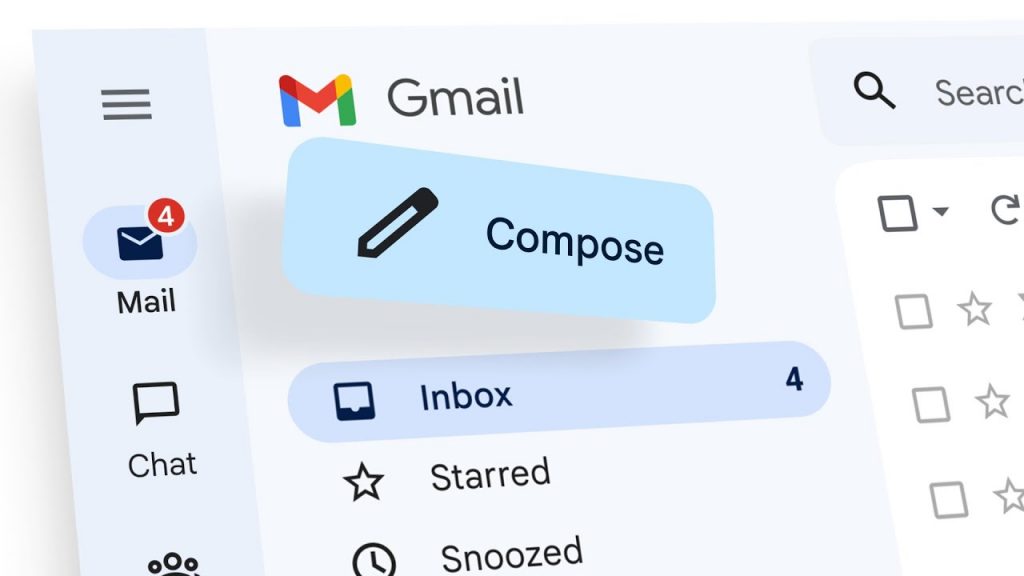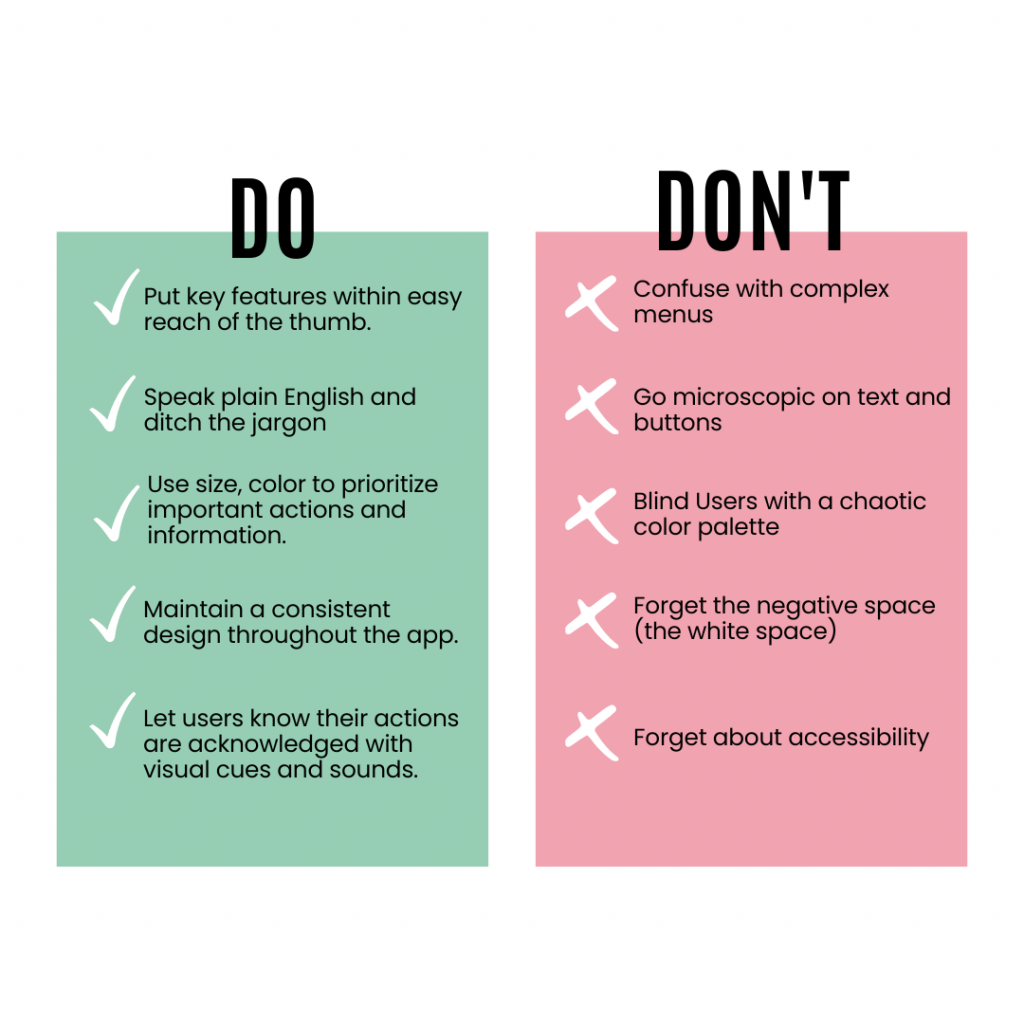Video call-based businesses are revolutionizing communication and collaboration within organizations in the interconnected world of today. From facilitating remote work meetings to enabling virtual consultations and online education, the advent of video calls has revolutionized the way individuals connect and interact. However, to fully realize the potential inherent in video call-based operations, businesses must transcend generic solutions and embrace custom mobile applications finely tuned to their unique requirements. This guide endeavors to delve into the manifold advantages that bespoke mobile applications offer to video call-based businesses. By adopting tailored solutions, organizations can unlock enhanced efficiency, heightened productivity, and elevated customer satisfaction levels. Custom mobile applications pave the way for seamless integration of video call functionalities, providing businesses with the tools necessary to streamline operations and deliver unparalleled user experiences. As we navigate through the intricacies of custom mobile solutions, we aim to illuminate the transformative impact they can wield in the realm of video call-based enterprises, propelling them towards greater success and innovation in today’s dynamic landscape.
Understanding the Landscape of Video Call-Based Businesses
Video call-based businesses have become increasingly prevalent across various industries, spanning from healthcare and education to finance and customer service. These businesses leverage video conferencing solutions to enable real-time communication and collaboration among remote teams, clients, and stakeholders. With the surge in remote work trends and the ongoing need for virtual engagement in a post-pandemic world, the adoption of video call-based technologies has accelerated significantly. Businesses are recognizing the importance of innovative mobile solutions to streamline their video call operations and remain competitive in the market. As such, there’s a growing demand for reliable and efficient platforms that can facilitate seamless video calls, ensuring smooth communication and collaboration regardless of geographical barriers. Embracing video call-based technologies not only enhances connectivity and productivity but also opens up new opportunities for businesses to thrive in an increasingly digital landscape.
The Role of Custom Mobile Solutions: Custom mobile applications tailored to the specific needs of video call-based businesses offer a myriad of benefits:
- Enhanced User Experience
Custom mobile apps can revolutionize video call-based applications by providing intuitive interfaces, personalized settings, and advanced features to enhance user experience. A well-designed user interface ensures that users can navigate the app effortlessly, accessing essential features with minimal effort. From initiating calls to adjusting settings and managing contacts, every interaction should be intuitive and seamless. Personalized settings allow users to tailor their video call experience to their preferences, whether it’s adjusting audio and video quality, setting up notifications, or choosing themes and layouts. Additionally, advanced features such as screen sharing, virtual backgrounds, and real-time annotations enhance the functionality of video call-based apps, offering users a more immersive and interactive experience. By prioritizing user experience and incorporating these elements into custom mobile apps, developers can elevate the video call experience to new heights, fostering engagement, satisfaction, and loyalty among users. Whether it’s for business meetings, virtual events, or social gatherings, a well-crafted video call-based app can make every interaction memorable and meaningful for users.
- Improved Performance and Reliability
Custom development provides businesses with the opportunity to enhance performance and reliability in video call-based applications by tailoring solutions to their specific needs. With custom development, businesses can optimize network connectivity, ensuring that video calls remain stable and uninterrupted even in low-bandwidth environments. This optimization involves implementing efficient data transmission protocols, prioritizing essential data packets, and minimizing latency to deliver smooth and high-quality video calls. Additionally, custom development allows for the integration of advanced features such as adaptive bitrate streaming, which dynamically adjusts video quality based on available bandwidth, further enhancing the user experience. Moreover, custom development enables businesses to fine-tune their applications’ performance by optimizing resource utilization, reducing CPU and memory usage, and implementing efficient data caching mechanisms. By leveraging custom development, businesses can build video call-based applications that offer unparalleled performance and reliability, ensuring seamless communication experiences for users across various network conditions.
- Enhanced Security Measures
Video call-based custom mobile solutions prioritize enhanced security measures to ensure the protection of sensitive data and uphold user privacy. These solutions integrate robust security protocols, leveraging cutting-edge encryption techniques and adhering to industry regulations to establish a secure environment for communication. End-to-end encryption is a fundamental aspect of video call-based applications, ensuring that data remains encrypted throughout transmission, thereby mitigating the risk of unauthorized access or interception. By implementing stringent security measures, such as authentication mechanisms and secure data storage practices, custom mobile solutions bolster trust and confidence among users, reassuring them that their information is safeguarded against potential threats. Furthermore, compliance with industry regulations, such as GDPR and HIPAA, demonstrates a commitment to data protection and regulatory compliance, instilling confidence in users regarding the confidentiality and integrity of their personal information. In essence, prioritizing enhanced security measures in video call-based custom mobile solutions not only safeguards sensitive data but also fosters trust and credibility, ultimately enhancing the overall user experience and driving adoption and engagement.
- Seamless Integration
Custom video call-based applications excel in seamless integration, effortlessly merging with existing software systems, third-party APIs, and collaboration tools. This integration prowess empowers organizations to streamline operations and optimize workflows, boosting efficiency and productivity. Integration with software systems like CRM platforms or project management tools ensures a cohesive digital ecosystem, allowing users to access relevant information within the video call interface. Moreover, integration with third-party APIs enhances functionalities such as real-time transcription or virtual backgrounds, enriching user experiences. Additionally, seamless integration with collaboration tools fosters effective communication and collaboration among team members, enhancing knowledge sharing and decision-making processes. In essence, the seamless integration capabilities of custom video call-based applications drive organizational success by optimizing workflows and enhancing user experiences.
- Scalability and Flexibility
Scalability and flexibility are paramount considerations in the realm of video call-based mobile solutions. Custom-built applications offer inherent scalability, providing businesses with the agility to expand their offerings and accommodate increasing user demands. Whether it’s scaling up to support a growing user base or integrating new features and functionalities, custom solutions offer the flexibility to evolve alongside the business. This scalability ensures that the application can handle a higher volume of concurrent users and adapt to fluctuations in usage patterns without compromising performance or user experience. Additionally, custom mobile solutions empower businesses to pivot swiftly in response to changing market dynamics or emerging trends. With the ability to iterate and innovate rapidly, businesses can stay ahead of the competition and capitalize on new opportunities as they arise. By investing in scalable and flexible video call-based mobile solutions, businesses can future-proof their technology stack and position themselves for long-term success in a dynamic and evolving digital landscape.
- Branding and Customization
Branding and customization play a pivotal role in shaping the user experience and perception of video call-based applications. Custom apps provide businesses with the flexibility to tailor the interface, features, and overall look and feel to align with their brand identity and values. By incorporating branding elements such as logos, color schemes, and imagery, businesses can create a cohesive and visually appealing video call experience that reflects their brand identity. Additionally, customization options allow businesses to personalize the app’s functionality to meet the specific needs and preferences of their target audience. This can include features such as custom invitation messages, branded backgrounds, and tailored settings options. Furthermore, white-labeling capabilities enable businesses to remove any references to third-party providers and present the app as their own proprietary solution, instilling confidence and trust among users. Overall, branding and customization empower businesses to differentiate themselves in a competitive market landscape and establish a strong and memorable presence in the minds of their users.
- Analytics and Insights
Analytics and insights are indispensable in optimizing the effectiveness and efficiency of video call-based solutions. Custom mobile applications tailored for video calls possess inherent capabilities to gather extensive data on user behavior, call metrics, and various performance indicators. These insights provide businesses with a comprehensive understanding of their video call operations and user engagement patterns. By analyzing metrics like call duration, frequency, participant demographics, and user feedback, businesses can pinpoint areas for improvement and refine their video call strategies. For example, tracking user engagement levels allows businesses to identify common pain points or technical issues and implement targeted solutions. Furthermore, analytics empower businesses to measure the impact of their video call initiatives, assess ROI, and make informed decisions about resource allocation and future investments. Leveraging analytics and insights derived from custom mobile solutions enables businesses to optimize their video call operations, drive user engagement, and achieve their objectives more effectively in today’s digital landscape.
Case Studies and Success Stories:
To illustrate the impact of custom mobile solutions on video call-based businesses, let’s explore a few real-world examples:
- Healthcare
In response to the increasing demand for remote healthcare services, a leading telemedicine platform partnered with a custom mobile app development company to create a HIPAA-compliant telehealth app. The app facilitated seamless virtual appointments between patients and healthcare providers, ensuring secure transmission of sensitive medical information. Patients could schedule appointments, conduct video consultations, and securely access their medical records from their mobile devices. By adhering to HIPAA regulations, the app guaranteed the privacy and confidentiality of patient data, enabling healthcare providers to deliver high-quality care remotely while maintaining compliance with regulatory requirements. This innovative solution not only enhanced access to healthcare services but also provided patients with a convenient and secure platform for managing their healthcare needs from the comfort of their homes.
- Education
Byju’s, an innovative education technology company, has successfully implemented video call-based solutions to enhance its online learning platform. By integrating real-time video communication features into its app, Byju’s enables students to engage in interactive live classes with experienced teachers, fostering personalized learning experiences from the comfort of their homes. This approach has revolutionized the traditional classroom model, allowing students to access high-quality education remotely and interact with educators in real-time, irrespective of geographical constraints. With features such as live video lectures, interactive quizzes, and instant doubt resolution, Byju’s empowers students to learn at their own pace and gain a deeper understanding of complex concepts. This video call-based approach has not only improved student engagement and comprehension but has also facilitated effective communication and collaboration between teachers and learners, driving academic success and empowering students to achieve their full potential.
- Customer Service
Lenskart, a leading eyewear retailer, recognized the importance of providing exceptional customer service and decided to invest in a custom mobile app solution to enhance its customer support capabilities. By integrating a live video chat feature into their app, Lenskart enabled customers to receive real-time support, product demonstrations, and personalized assistance from customer service representatives. This innovative approach to customer service not only improved customer satisfaction but also enhanced the overall shopping experience for users. With the ability to interact face-to-face with representatives, customers could receive immediate assistance, ask questions about products, and even try on virtual eyeglasses, leading to increased engagement and higher conversion rates for Lenskart.
- Social
Instagram introduced video calling functionality to enhance user engagement and communication within its platform. Users can initiate individual or group video calls directly from their Instagram Direct messages. For example, a case study involves a group of friends spread across different cities who regularly use Instagram to stay connected. With the introduction of video calling, they can now easily initiate group video calls to catch up, share experiences, and maintain their close-knit bond despite geographical distances. This feature has significantly enriched their social interactions on Instagram, providing a more immersive and personal way to connect with each other in real-time. Whether it’s celebrating milestones, planning outings, or simply enjoying casual conversations, the video calling feature has become an integral part of their social experience on the platform, fostering deeper connections and lasting friendships.
Roadmap for Implementing Custom Solutions for Video Call-Based Businesses:
- Define Objectives and Requirements
Aligning the goals and requirements for a custom solution with the organization’s broader vision and goals is crucial when developing a solution for video call-based businesses.The primary focus should be on addressing the unique needs and challenges inherent in video call-based operations, with the aim of enhancing communication, streamlining workflows, and ultimately driving business success. This entails identifying specific goals such as improving communication efficiency, enhancing user experience, and increasing overall productivity within the context of video call-based interactions. Additionally, outlining the features and functionalities required to meet these objectives is essential, considering factors such as scalability to accommodate growing user bases, robust security measures to protect sensitive data exchanged during video calls, and seamless integration with existing systems to ensure smooth workflows. By defining clear objectives and requirements tailored to the intricacies of video call-based businesses, organizations can lay the foundation for the development of a custom solution that addresses their unique needs and delivers tangible value to users and stakeholders alike.
- Conduct Market Research
Conducting thorough market research is paramount for any organization looking to venture into the realm of video call-based businesses. By delving into the current landscape, businesses can gain valuable insights into emerging trends, user preferences, and competitive offerings within the market. This research entails a comprehensive analysis of the needs and pain points of the target audience, allowing organizations to tailor their custom solutions to address specific user requirements effectively. Furthermore, evaluating existing solutions in the market provides invaluable information about their strengths, weaknesses, and areas for improvement. This process enables businesses to identify opportunities for differentiation and innovation, ensuring that their custom solution stands out in a crowded marketplace. Overall, market research serves as a crucial foundation for the development of a successful video call-based business, guiding strategic decision-making and informing the creation of a solution that meets the evolving needs of users.
- Identify Key Performance Indicators (KPIs)
Determining Key Performance Indicators (KPIs) is crucial for assessing the efficacy and success of customized solutions in the context of video call-based organizations. Metrics such as user engagement, adoption rate, retention rate, call quality, and customer satisfaction serve as valuable indicators of the solution’s impact on achieving business objectives. By establishing benchmarks for each KPI, businesses can track progress over time and assess the tangible outcomes of implementing the custom solution. High levels of user engagement and adoption, coupled with positive feedback on call quality and customer satisfaction, indicate that the solution is effectively meeting the needs of users and driving desired outcomes for the business. Regular monitoring and evaluation of these KPIs enable businesses to make informed decisions, optimize performance, and ensure continued success in the competitive landscape of video call-based businesses.
- Determine Budget and Resources
Determining the resources and budget process involves careful consideration of various factors, including development costs, hardware and software requirements, personnel expenses, and ongoing support and maintenance. Development costs encompass expenses associated with designing and building the custom solution, including software development, UI/UX design, and testing. Hardware and software requirements involve identifying the necessary equipment and technologies needed to support the video call infrastructure, such as servers, bandwidth, and video conferencing software licenses. Personnel expenses include salaries for developers, designers, project managers, and other team members involved in the project. Additionally, allocating resources for ongoing support and maintenance ensures the long-term sustainability and effectiveness of the custom solution. By strategically allocating resources and adhering to budget constraints, video call-based businesses can ensure the successful execution of the project while maximizing return on investment.
- Identify the Partner
In the process of identifying a suitable partner for developing custom solutions tailored for video call-based businesses, it’s crucial to conduct a thorough evaluation of potential candidates. Look for partners who have a proven track record in delivering successful projects within the realm of video call technology. Assess their industry experience and technical capabilities, ensuring they possess the expertise needed to meet your specific requirements. Review their portfolio of past projects to gauge the quality of their work and their ability to deliver innovative solutions. Additionally, consider softer aspects such as communication skills, responsiveness to inquiries, and cultural fit with your organization’s values and working style. Once you’ve selected a partner, establish a close collaboration to ensure alignment on project objectives, timelines, and deliverables. This collaborative approach fosters effective communication and ensures that the custom solution meets the unique needs and goals of your video call-based business.
- Develop Prototypes and MVP
The process of developing prototypes and Minimum Viable Products (MVPs) is an essential phase in the process of developing custom solutions for organizations that rely on video calls. Prototypes and MVPs serve as initial versions of the custom solution, allowing developers to validate concepts, gather feedback from stakeholders, and assess usability and functionality. By creating prototypes, developers can present tangible representations of the proposed solution, enabling stakeholders to visualize how the final product will look and function. Through user feedback sessions and testing processes, stakeholders can provide valuable insights and suggestions for improvement, guiding the refinement of features and design elements. This iterative approach allows developers to prioritize features based on their importance and feasibility, ensuring that key functionalities are delivered in a timely manner. By continuously iterating on prototypes and MVPs, developers can iteratively refine the custom solution, ultimately leading to the creation of a robust and user-friendly product tailored to the specific needs of video call-based businesses.
- Implement Custom Solution
The goal of the project’s implementation phase is to actualize the customized solution for the video call-based company. This involves executing the development process in accordance with the agreed-upon specifications and timeline. Close collaboration between the development team and stakeholders is crucial to ensure that the project progresses smoothly and stays aligned with its objectives. Continuous monitoring of progress helps identify any challenges or roadblocks early on, allowing for prompt resolution and adjustments as needed. Thorough testing and quality assurance procedures are conducted to detect and address any issues or bugs before the solution is deployed. This meticulous approach ensures that the custom solution meets the desired standards of functionality, reliability, and performance, setting the stage for a successful deployment and adoption by users.
- Deploy and Train Users
The goal of the deployment and training phase is to successfully introduce to the users the customized solution designed for organizations that rely on video calls. This involves rolling out the solution across the organization or target user base and ensuring that users receive adequate training and support to utilize the platform efficiently. Key activities include communicating the benefits and features of the solution to users, addressing their questions and concerns, and providing ongoing support as they navigate the platform. Additionally, monitoring user feedback and usage patterns is crucial to identify any areas for improvement or optimization in the solution. This phase aims to facilitate a smooth transition and adoption process, maximizing user engagement and satisfaction with the video call-based business solution.
- Measure Performance and Iterate
In the context of a video call-based business, it is critical to continually evaluate the success of the unique solution established for such organizations. It highlights the need to measure the solution’s performance against predefined Key Performance Indicators (KPIs), which could include metrics like call quality, user engagement, and customer satisfaction. By gathering insights from user feedback and usage data, businesses can identify areas for improvement and optimization. This iterative approach allows for regular updates and improvements to the custom solution, ensuring that it remains effective and aligned with the evolving needs of the business and its users.
Conclusion:
Custom mobile solutions play a pivotal role in maximizing the efficiency, effectiveness, and success of video call-based businesses across various industries. By investing in tailored apps that prioritize user experience, security, and scalability, businesses can unlock new opportunities for growth, innovation, and customer satisfaction. As the demand for remote communication and collaboration continues to rise, custom mobile solutions will remain essential tools for businesses seeking to thrive in the digital age.
Recommended Reads:
- Maximizing Efficiency: The Role of Virtual Conferencing in Business
- Web phone: How to maximize business communications with internet telephony?



















